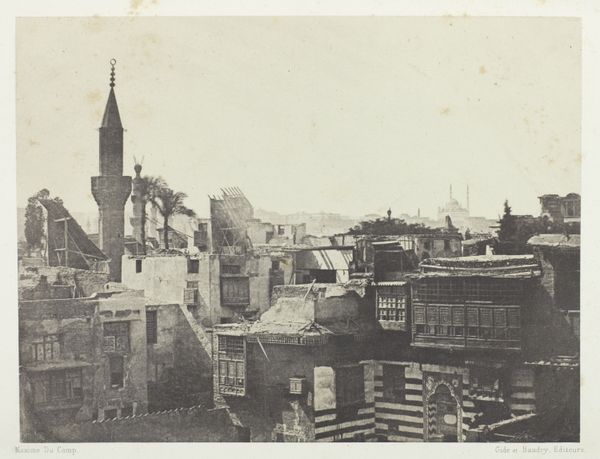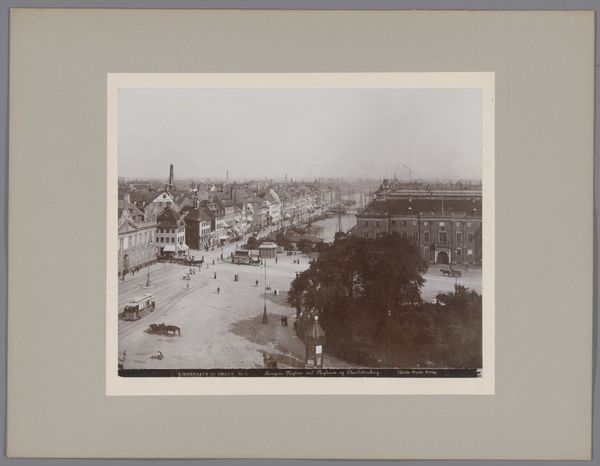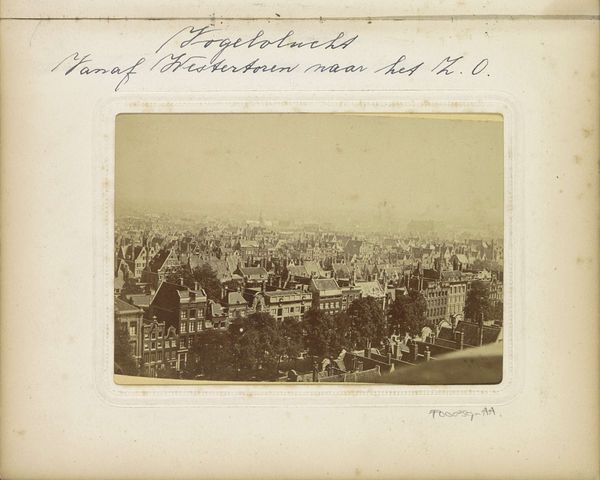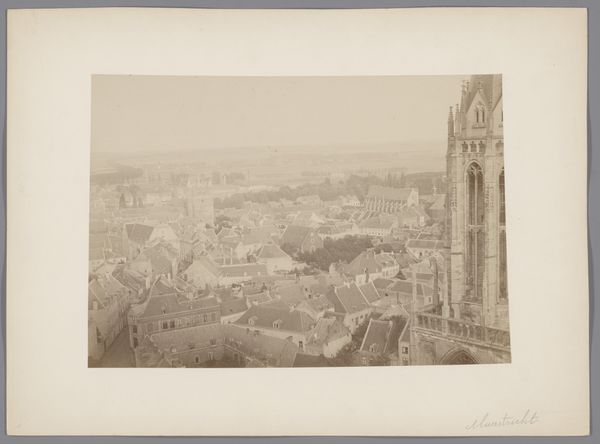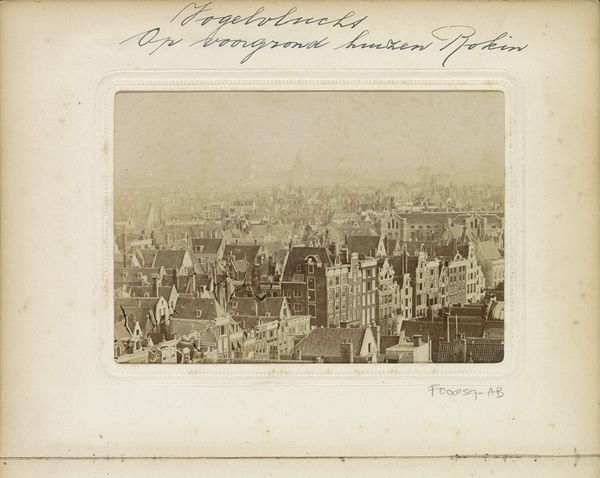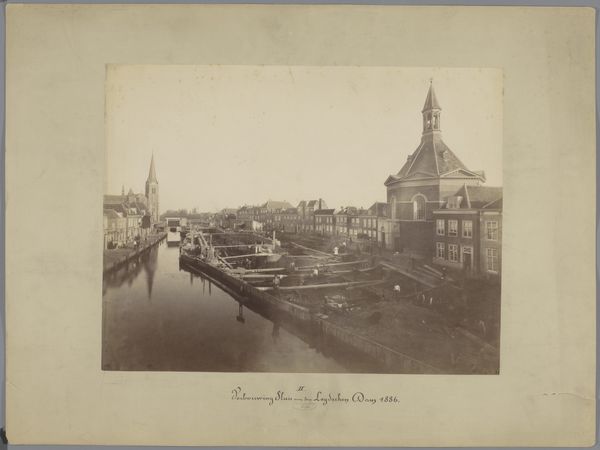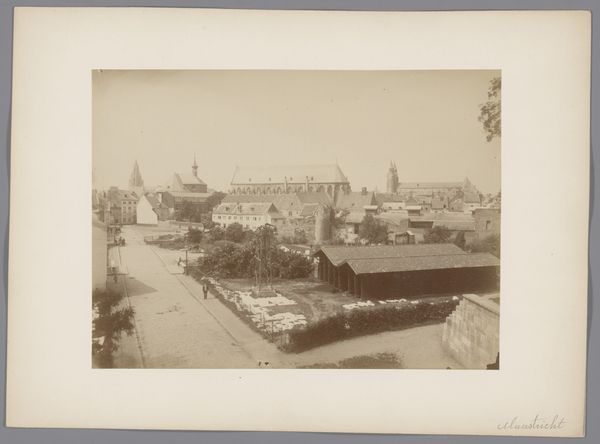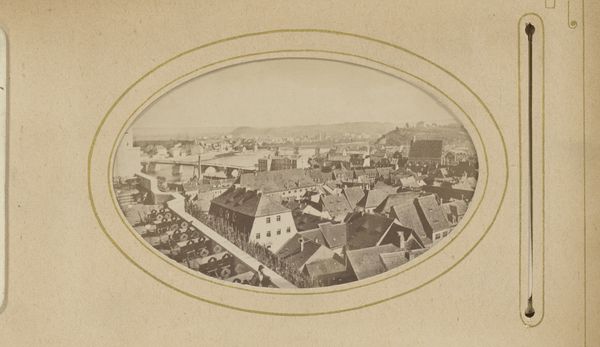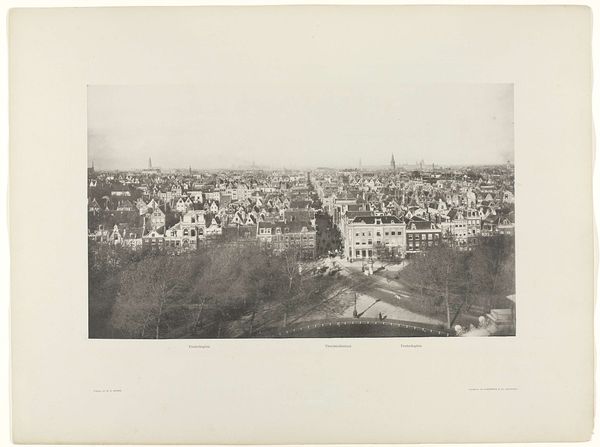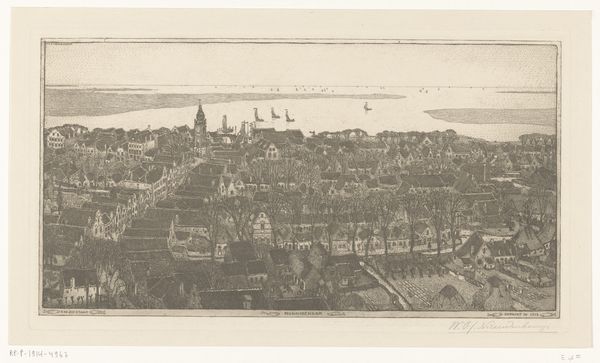
photography, gelatin-silver-print
#
pictorialism
#
landscape
#
photography
#
gelatin-silver-print
#
cityscape
#
realism
Dimensions: height 215 mm, width 268 mm
Copyright: Rijks Museum: Open Domain
Editor: So this is “Easterly from Fairmount,” taken sometime between 1883 and 1888, a gelatin-silver print. The cityscape itself feels incredibly dense, almost claustrophobic in its repetition of rooftops. What stands out to you? Curator: For me, the gelatin-silver print medium speaks volumes. It’s not just about capturing an image, but about a specific mode of industrial production. The late 19th century saw the rise of mass photography; this image then is not just a view of Fairmount, but an artifact of the growing accessibility and industrialization of image-making. Think about who would have had access to photography equipment and who would have been left out. Editor: That’s a great point! The material itself points to larger societal shifts. Does the composition itself – the way the houses are packed together – also reflect those shifts? Curator: Absolutely. The density you noticed suggests urban growth and perhaps even anxieties about space and resources. Consider the labor involved in constructing these houses, the materials used – likely sourced from various locations – and the social stratification reflected in their size and design. Each house embodies a story of production, consumption, and social standing. Do you notice any specific architectural details or material choices repeated throughout? Editor: Now that you mention it, I do see a lot of similar rooflines, maybe indicating a particular building method or available resources. The fence in the foreground, too; it feels mass-produced. Curator: Precisely. These elements point towards standardization and industrial manufacturing, hinting at the increasingly mechanized and interconnected world. The photograph, then, isn't just documenting a scene, but also quietly showcasing the changing nature of labor and material culture. Editor: I’m beginning to see it less as a simple landscape and more as a document of industrial processes. Thanks, that really changed my perspective! Curator: It's all about tracing the object's origins and considering its place within broader networks of production and consumption. I am happy to have guided you a bit further along this path of discovery.
Comments
No comments
Be the first to comment and join the conversation on the ultimate creative platform.

